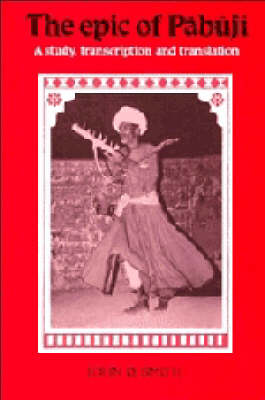University of Cambridge Oriental Publications
2 total works
Pabuji, a mediaeval Rajput hero from western Rajasthan, is widely worshipped in that state as a folk-deity capable of protecting against ill-fortune. The principal form of worship entails the night-time singing, by low-caste bard-priests, of an oral epic narrative telling of Pabuji's deeds. This takes place in front of a long painted cloth, or par, on which those same deeds are depicted: the par functions as the temple of the deity. This work focuses in detail on this epic/cultic tradition. After a general introduction, there are chapters on the transmission and performance of the narrative, including the music, iconographic organisation of the paintings, historicity of the hero, and his status as a Hindu god. There follows a complete transcription of the epic as performed by Parbui Bhopo, a leading bard. Next comes a full English translation, which is illustrated by 100 ink drawings depicting each scene as it appears on the par; these are the work of Srilal Josi, a traditional painter of par. Two appendices follow, one giving the earliest known version of the story of Pabuji, the other explaining the small number of scenes from the par that do not relate directly to the epic narrative.
The object of the study is to restore to its original form the Vīsaladevarāsa, a poetical work composed in Rājasthān probably in the middle of the fifteenth century of our era. Dr Smith has provided a full critical analysis of his method, and he also studies in detail the linguistic elements of the text. A full English translation of the reconstituted text is placed opposite the text, and there is a full glossary and index. This study will be of interest to scholars specializing in New Indo-Aryan languages and literatures and in Indo-Aryan philology and textual criticism.

